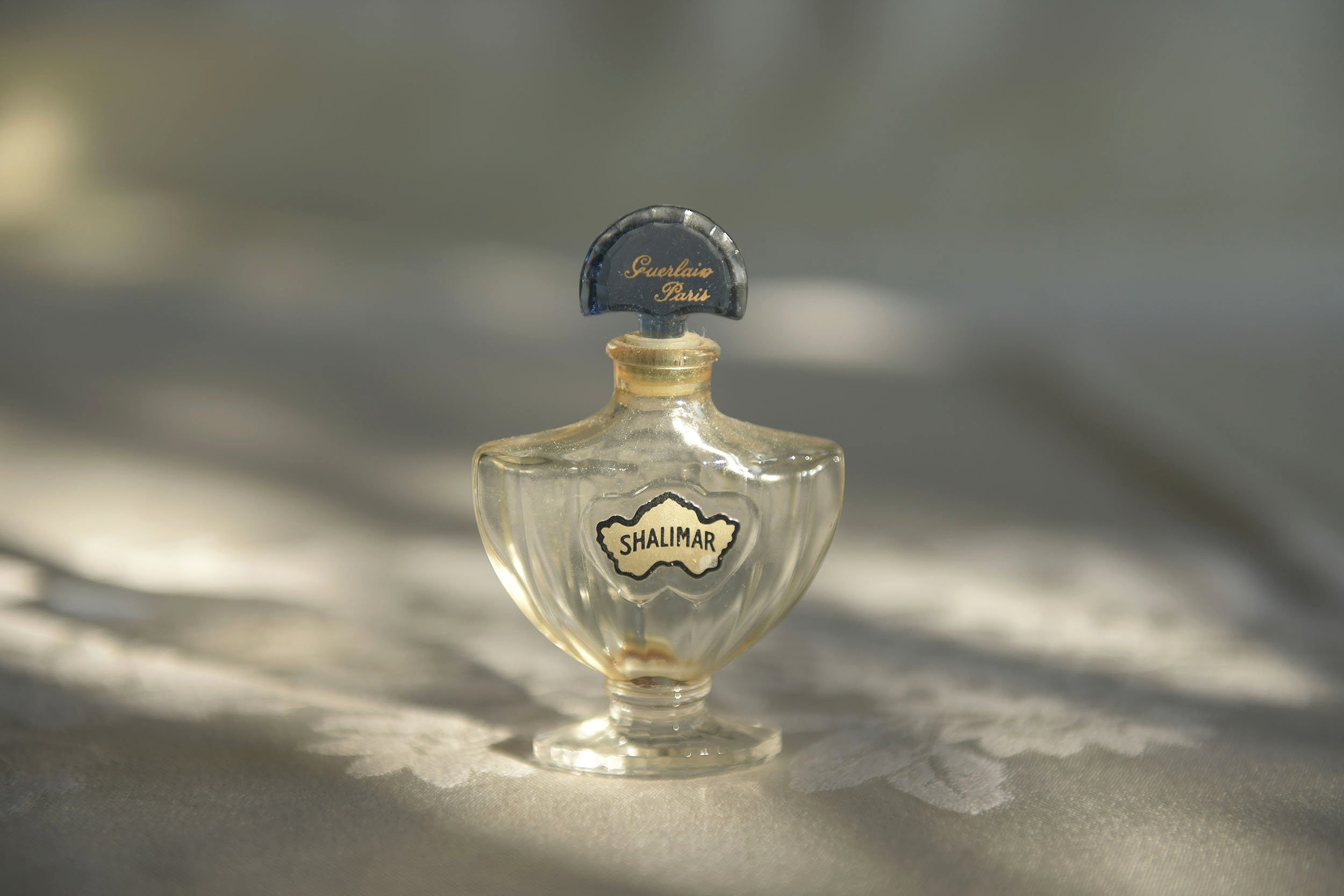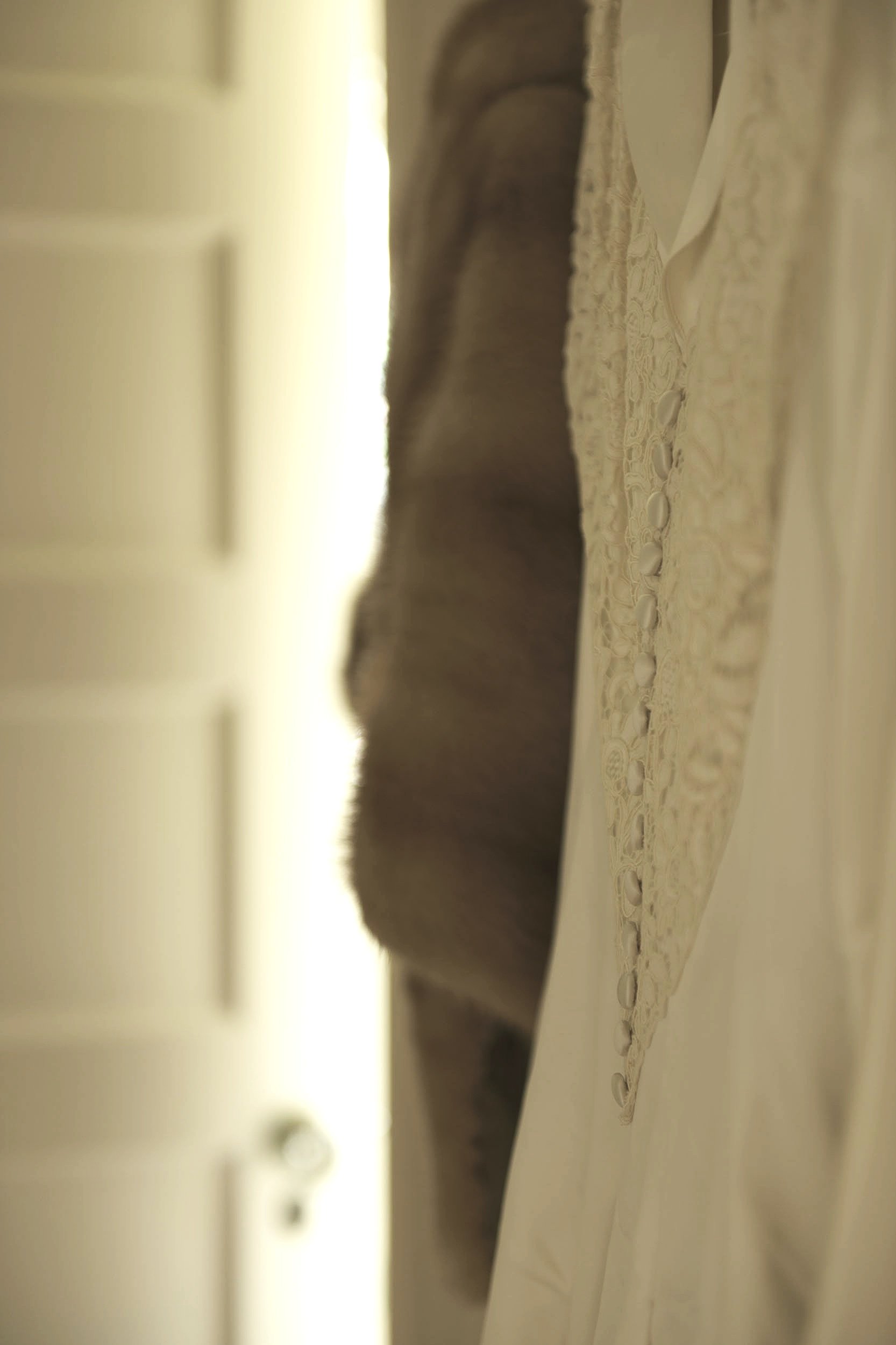Book of Rose is a work-in-progress:
While making these photographs I was also writing a novel: The Vanishing of Rose B. In this novel the main character, Rose B., has two daughters, Frances and Claire. Frances is an architect and Claire is a photographer. Upon Rose’s death, Claire begins to photograph her mother’s clothes and effects, having taken to heart a sentence from Camera Lucida, in which Roland Barthes mourns the death of his mother:
. . . my attention is distracted from her by accessories which have perished; for clothing is perishable, it makes a second grave for the loved being.
Claire becomes obsessed with photographing the vestiges of her mother’s existence—Rose’s clothes and accessories—in order to preserve evidence of that existence, before those things are relegated to an indeterminate grave and her memories of them, and of the woman who wore them, begin to elude her.
Not long into my writing I, too, began to photograph my own late mother’s clothes and accessories. Claire (my character) and I began to mirror each other. As I increasingly inhabited my character, I imagined that the photographs I was making of my mother’s belongings might have a place in the novel.
But then . . . over the years my mother and I had given away many of her clothes and accessories. Missing were her business suits and dresses. Many of her shoes and purses. Her half-empty bottles of perfume. Compelled to make photographs of these missing objects—again, for the purposes of the novel—I shopped for them online. I bought a pink pillbox from a milliner in Odessa and linen sandals from Spain. They were very much my mother’s style. She would have loved them.
And now that I’ve finished writing, I believe the photographs are unnecessary; in fact, if I were to include them, I believe they’d be a distraction.
Therefore this portfolio of images, soon to be an artist’s book.
° ° °
The following excerpt is from the novel, The Vanishing of Rose B.
Claire speaking:
When I realized it was time to begin going through her clothes and belongings—I mean, after all, it’d been almost a year—I figured I should call Frances and ask if she’d like to come help. Not that I particularly wanted her here. She might want to throw everything out. But I thought about that just a little too late. Also it hadn’t occurred to me that I might want to live with these things a little longer. Because let’s say I, or we—Frances and I—decide to give these things away—actually I’m sure that’s what she’ll want to do—that’ll be the end of them. Along with any memories attached to them.
Though honestly, even if I were to keep some things—let’s say a few scarves, a few pins and jackets—I know I’ll end up putting them in a drawer or closet somewhere, and by the time I find them again they will have turned into something else. Every scarf. Every pin or jacket. By then each one will be just a thing that’s lost any magic it might have once had, and whatever memory was attached to it will have evaporated. Something else will have entered my mind and claimed that space, the space it once occupied. Something else will have settled in, and now that scarf or pin or jacket, or plate or cup or book will be just another something that once belonged to my mother. Suppose someone says—let’s say I’m invited to a dinner party, every now and then I’m invited to a dinner party—and let’s say I’m wearing something vintage of my mother’s and someone says, Oh what an interesting piece, is that 50s? 60s? Where did you find it? I’ll say that it belonged to my mother, and that will be the end of it. That will be the end of that conversation, and likely the end of any memory as well. Because to speak of such things like that often renders them finite. And so I have to say: It’s very hard for me, if not impossible, to contemplate that sort of ending. Which is the reason for the photographs I’ve been making. Of her clothes and belongings. They’re a way for me to contemplate what I didn’t understand about my mother while she was living. I know they can’t possibly say all that much to anyone else. I don’t expect them to, actually. Without my talking about them to anyone who might see them, without my providing some context, what could they possibly mean? Yet when I talk about them, a small world begins to take shape, I believe.
Not to mention that these photographs may mean something to Frances. When she comes.
Although knowing Frances, they may mean nothing at all to her. I need to prepare myself for that possibility.
One thing that fascinated Frances and me as children was our mother’s wedding gown. When our mother couldn’t find anything she liked here in town she went shopping with Helen in Philadelphia. When they didn’t find anything in Philadelphia they went to New York, and found a magnificent work of art at a little shop on 54th, between Lex and Third. The owner was French. Her name was Lisette Valadier. Parisian Bride was the name on the plate glass. I found a photo of my mother and Helen standing in front of that window. And the shop’s business card, along with a few other pieces of wedding ephemera. A small pink box, with a snip of blue ribbon inside—a little something blue—and petal fragments—from my father’s boutonnière, I suppose. All my mother knew about Lisette Valadier was that she had trained in Paris, and married an American GI, and came home with him after the war. I wanted to know more. Did she keep her French surname when she married? It seemed somewhat unusual for that generation. Or did she use the French surname solely for business purposes? Was she even still married to the American when you knew her? My mother didn’t know about any of that. All she could say was that Lisette Valadier was very professional, and that she cared a lot about the details. She served my mother and Helen tea and coffee, and little pastries, in the alcove across from the racks of gowns and dresses. She was never in a rush, my mother said. When she booked someone for an afternoon, that afternoon was theirs, it belonged to them alone. Yes, Lisette Valadier was lavish in her attention.
I’ve always been curious about women like Lisette Valadier. Women with small bundles of capital who start their own specialty shops. Highly skilled and aiming to please, eager to make a nice profit. Wanting every client happy with the just-perfect gown, the just-perfect hat, the just-perfect shoes.
Every two years our mother would take her wedding gown out from the chest where she kept it, and lay it out on her bed, and check the gown for insect damage, and rub the interior of the chest with cedar oil. Frances and I would run our fingers over the lace and satin and count the buttons. There were forty of them. Forty buttons running up the back like little stones.
I went looking for that bridal shop one day in New York. This was years ago, when I was in college. Whenever I needed a study break I’d take a long walk through the city. Forty, fifty blocks, then grab a bus back to the dorm. It was on one of those walks that I thought of looking for Parisian Bride. I was curious to see what sorts of gowns Lisette Valadier might be selling in those days. And if the alcove where she served my mother and Helen tea and coffee was still there. I’ll introduce myself to Lisette Valadier, I thought. If I’m lucky she’ll remember Rose and Helen, in which case I’ll call Mom from the shop phone and have her speak with Lisette. But I couldn’t find Lisette Valadier or the shop. I told my mother about it, that I’d tried to find Lisette. She shook her head and said, With all the school work you complain about, you spent time doing that?
I had a similar fascination with Miss Bloom. Miss Henrietta Bloom was a milliner from whom my mother sometimes bought hats. A chartreuse derby, for instance. A turquoise cloche. A pink pillbox.
Miss Bloom was British. She also came here after the war, though all on her own. I don’t think she revealed much about herself. At least not to my mother and Helen, and the other Girls. They all bought hats from Miss Bloom. Why she came here of all places to set up shop I have no idea. In any event, she managed to corner the market here on custom hats for women, since there was no other shop like hers outside of New York. I mean, on the East coast. Not even Boston or Philadelphia had one like hers. Believe me, I know, I’ve done the research.
It became a sort of game for Frances and me to guess what kind of hat our mother might have ordered from Miss Bloom. We’d know there was one on order if she came to pick us up later than usual from our grandparents’ house. We went there every day after school, and if she was going to be late we knew it had to be for one of two reasons, she either had a dentist appointment or she was going to Miss Bloom’s. We’d want to know all about the hat she’d ordered. What color would it be? Was it going to have a feather? An artificial rose or gardenia? Was it going to have a veil? Any jewels? Any ribbons? And so on. She’d nod Yes, or shake her head No, and based on that information we’d draw pictures. Will it look like this? Or like this? We shared that fascination, Frances and I, just as with the wedding gown. We were fascinated with the things adult women did, with what adult women wore. They were another country, a place we wanted to visit, take up residence in. But we were children and we knew we needed to wait. It was as if there were a glass wall between us as small girls and the world of women who could change the way they looked, and change the way the world looked at them, simply by virtue of the dresses they wore, or the makeup they used, or the way they combed their hair. Whereas we were cursed, with whatever defects we were cursed with. Chubby or skinny. Hair that frizzed. A face full of freckles.
I went looking for Miss Bloom’s shop as well. This was after Keene Valley, when I moved back here. I was trying to get myself organized, trying to figure out if coming home was the right thing to do and what my life was all about. Part of my search consisted in driving around the city. My parents were still working and I was living with them. I’d drive my mother to the office every morning and pick her up late afternoon. In between I’d visit my old haunts. The bookstore, the library. The movie theaters Frances and I would go to and the cafés where we’d have lunch. Miss Bloom’s was gone. Not a trace of it.




















